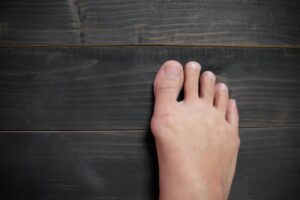3 Common Causes of Chronic Heel Pain

Heel pain is one of the most common causes of foot pain. You can experience all kinds of aches in your heels, from stabbing pain to irritating inflammation to a dull ache.
Many different conditions can cause heel pain, and finding out what’s causing yours is key to starting effective treatment. Learn from Ryan Golub, DPM, and Zachary Flynn, DPM, AACFAS, Arizona Foot Health podiatrists in Phoenix, Arizona, the three most common causes of chronic heel pain.
Why do I have heel pain?
Like the rest of your feet, your heel takes on your entire body weight when you move. Heel pain can arise from something as simple as soreness from doing more activity than you’re used to.
Other times, especially when it’s ongoing, heel pain can indicate you have a foot or ankle condition that needs to be treated. These are three of the most common reasons you might experience heel pain.
1. Plantar fasciitis
Plantar fasciitis is the most common reason people experience heel pain. Plantar fasciitis is an inflammation of a fascia band that stretches from your toes to your heel.
When this band becomes strained, irritated, or torn, it can cause pain that feels like stabbing or throbbing when you put weight on the heel. This pain is usually worse when you first walk after a long period of rest, especially right after waking up in the morning.
Plantar fasciitis is a common injury. You might be at especially high risk if you have a job or lifestyle that requires a lot of standing, have recently significantly increased the intensity of your exercise routine, or have a structural abnormality in your foot.
2. Achilles tendinitis
Achilles tendinitis is another common injury that can cause pain in your heel, as well as your Achilles tendon and calf. Achilles tendinitis is an inflammation that can occur in the Achilles tendon.
The Achilles tendon connects to your heel so that the inflammation can cause pain and stiffness in the back of the heel. It’s often worse when your calf muscles are tight first thing in the morning.
Achilles tendinitis is common in athletes and anyone active from overuse. Wearing improper footwear for your lifestyle can make you especially prone.
3. Bursitis
Bursitis is the inflammation of a fluid-filled sack, known as a bursae. These can occur on the back of your heel or near your Achilles tendon.
When you have bursitis, it’s common for your heel to feel irritated, tender, or like a bruise near the bursa. It can also get irritated by rubbing against incorrectly fitted shoes.
You’re at more risk of developing bursitis if you’re active and on your feet a lot or wear shoes that don’t fit well.
Treating heel pain
Because so many different conditions can cause heel pain, it’s important to find out the cause of yours to identity the proper treatment. Our team performs an examination and uses diagnostic tools such as MRI and X-ray to make a diagnosis.
Once the cause is clear, our team develops a treatment plan to reduce and ultimately eliminate the pain. Heel pain can usually be treated nonsurgically with interventions like rest, medication, orthotics, physical therapy, and pulse wave therapy.
By starting treatment as soon as possible for heel pain, you’ll get relief more quickly, and it’s less likely to develop into a more serious problem. Contact us for an evaluation and treatment.
You Might Also Enjoy...
The Achilles Heel
Given Arizona’s climate, patients are able to remain active year round. It’s why we all chose to live here. But…
Alleviating Back Pain and Other Benefits of Custom Orthotics You Didn’t Know About
Would you ever imagine that custom foot orthotics could improve your quality of life? That’s what many people say after…
9 Helpful Tips to Prepare Your Home Before Bunion Surgery
When moderate interventions, such as wearing wider shoes or using pads in your shoes, fail to ease your bunion pain…
When Should You Go to the Doctor for an Ingrown Toenail?
In most cases, you can nurse an ingrown toenail at home with over-the-counter pain medication, topical antibiotic creams, and soaking…
6 Home Exercises to Keep Your Ankles Strong
Ankles that feel wobbly and weak are vulnerable to injury. If you play sports, run, jump, or just walk often,…
Is Surgery My Best Option For Treating Bunions?
You have a bunion and it isn’t pretty, but if your bunion is small enough, or doesn’t hurt, you may…






